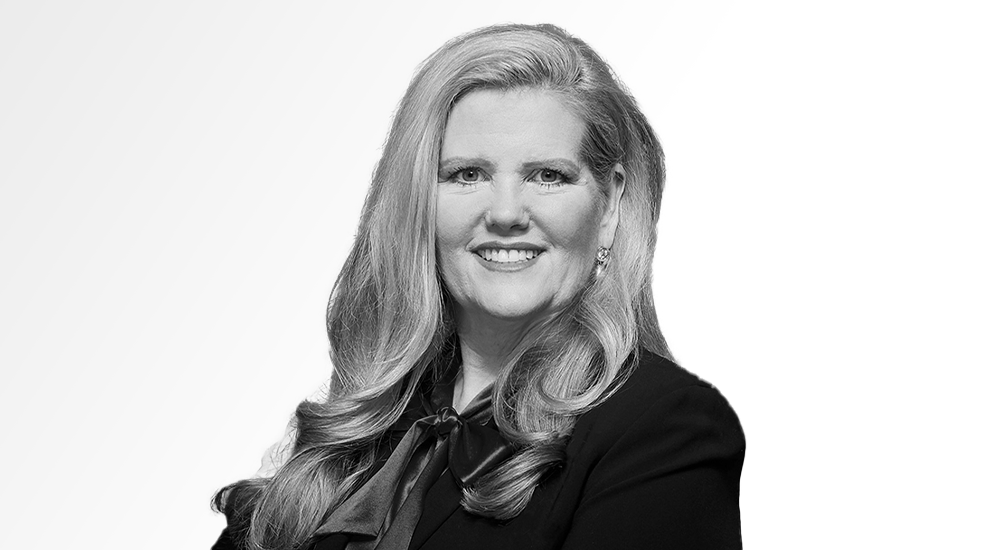Marie Dzanis, head of asset management for EMEA, at Northern Trust Asset Management (NTAM), has no concerns about launching an ETF business in Europe despite the challenges a small issuer can face in a fragmented market.
Speaking to ETF Stream for the first time since entering the European ETF market in March, Dzanis (pictured) stressed the importance of offering a differentiated range that plays into the strengths of the asset manager if it is to have any success on the continent.
NTAM’s journey into the ETF market is highly intertwined with her own career. The firm launched its FlexShares ETF range in the US a decade ago in November 2011 just six months after Dzanis joined the US giant from BlackRock where she was part of the firm’s recently acquired iShares arm.
After seven years in the US, Dzanis was charged with leading NTAM’s EMEA business in 2018 and immediately, put into motion plans to bring the FlexShares ETF range to Europe which is now in the top 20 issuers in the US.
“When I came over [from the US], I spent over 150 hours interviewing the strategy team to find out what we need, what the gaps are and whether there are any additional capabilities we can offer investors,” Dzanis said.
One of these gaps was an ETF offering, in a market that has grown at 20% a year this side of the pond since the Global Financial Crisis in 2008 to now total €1.3trn assets under management (AUM), according to data from PwC.
After the ETF space was identified as a “natural extension” to NTAM’s existing offering of active, index funds and segregated mandates, the asset manager began hiring ETF specialists in sales and capital markets throughout 2019 and last year in preparation for its launch.
“We are committed to the ETF space. This has been a multi-year process and is not something you want to do quickly,” Dzanis stressed. “Europe is a big opportunity.”
ETF range
This launch, which was put on hold when coronavirus hit the continent in February 2020, came three months ago in the form of two smart beta ESG ETFs, a long way from the traditional market cap-weighted ETFs that offer exposure to the S&P 500 or Euro Stoxx 50.
“We will reside in a space that is between client needs and our own expertise,” she explained. “Investors need solutions that are beyond traditional beta.”
Differentiating from the market is one of the key challenges facing any new issuer, especially in a market as competitive as the European ETF ecosystem, however, Dzanis appears ready for the challenge.
The two ETFs, the FlexShares Developed Markets Low Volatility Climate ESG UCITS ETF (QVFD) and the FlexShares Developed Markets High Dividend Climate ESG UCITS ETF (QDFD), track two custom-built indices that were designed in partnership with Stoxx.
Employing a flexible indexing approach, Dzanis believes, is one of the key areas that will separate NTAM from the rest of the market.
Instead of being tied to the benchmarks that already exist that can easily be copied by other ETF issuers, the firm employs an index agnostic approach that works backwards from the outcome it wants to achieve with that strategy to the index design itself.
“We have a commitment to the flexible indexing process,” Dzanis added.
The other two areas of differentiation are taking a quantitative active approach – smart beta – and the firm’s ESG scoring methodology.
Dzanis said the ETFs leverage the firm’s history in factor investing and the work that has already been done in the index fund space.
“Industry definitions vary greatly when it comes to measuring factors such as quality,” she continued. “We have managed factors through multiple market cycles so have a strong foundation.”
Finally, Dzanis argued the firm’s approach to measuring a company’s ESG credentials – which combines methodologies from Sustainability Accounting Standards Board (SASB) and the Task Force on Climate-Related Financial Disclosures (TCFD) – is another differentiator.
“By the end of this decade, ESG will simply be a part of what everyone does,” the EMEA head said.
“There is no question COVID-19 had a positive impact on interest in ESG. For countries such as the Nordics and the Netherlands, it reinforced long-standing values while countries such as the UK are making significant changes.”
Overall, Dzanis revealed the US asset manager will launch at least one more ETF over the next six months but stressed strategies must be based on specific outcomes investors are demanding.
“Anything we build will focus on outcomes investors need be it income, liquidity, risk management or capital appreciation.”
Challenges
One area of potential improvement for the European ETF market, Dzanis said, is around standardisation. While the US has a favourable ecosystem for ETFs, there remain a number of structural challenges in Europe.
In particular, she highlighted the lack of harmonisation between exchanges when volatility increases and circuit breakers are triggered.
Last March, there was an average of approximately 3,000 circuit breakers affecting ETFs daily across the five major exchanges, however, the differing rules meant cross-listed ETFs were suspended at different times.
“I do think there is an opportunity to have more common standards,” Dzanis concluded. “A consolidated tape, for example, would be a big plus.”



